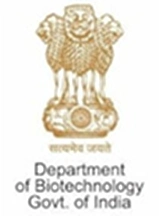A delivery system that releases a small dose of an immunosuppressive drug at the site of organ transplant has been developed by an international team of researchers, including those from the Institute for Stem Cell Biology and Regenerative Medicine (inStem), Bangalore.
The phase following a limb or solid organ transplant is crucial for patients as chances of its rejection are very high. Regular, heavy doses of immunosuppressive drugs are administered to receivers of a transplant to stop their immune system from reacting towards the foreign organ and rejecting it altogether. But these precautionary drugs, given regardless of the severity of immune reaction, come with their side-effects. Moreover, they suppress the entire body’s immune system leaving the patient vulnerable to infections, instead of suppressing the immune response at the site of transplant.
To overcome the high toxicity and vulnerability to infections associated with regular intake of drugs post-surgery, Dr. Praveen Kumar Vemula, principal investigator at the laboratory of self-assembled biomaterials at inStem, and co-workers packaged a commonly used immunosuppressive drug called tacrolimus in a gel. The gel – that needs to be injected only once under the skin of a transplant – releases the drug in small doses, enough to suppress the local immune response.
The added advantage of such a system is that the drug breaks free from the gel only when it is needed – in response to proteolytic enzymes. These enzymes are produced during inflammation, which is responsible for triggering a heightened immune response eventually resulting in transplant rejection. In the absence of inflammation, proteolytic enzymes are not produced in high numbers and the drug sits quietly in the gel.
This localized drug delivery system was tested in rats that received a hind limb transplant from another rat. One-time injection of gel containing 7 mg of tacrolimus post-surgery was found to prolong survival of the transplant to more than 100 days, according to research published in Science Translational Medicine today. All rats that received tacrolimus containing gel survived and no toxicity was evident. On the other hand, rats administered an equal dose of tacrolimus (7 mg) but without the gel survived rejection of the transplant only for an average of 33.5 days. Those without any treatment or with just the gel survived rejection for a mere 11 days.
This is a good strategy to counter infections resulting from immunosuppression in limb transplants, says Dr. Narinder Mehra, professor and head of the department of transplant immunology and immunogenetics at the All India Institute of Medical Sciences, New Delhi, not involved in the study. “In times to come it could also be used for face or hand transplants,” Dr. Mehra said. Given that tacrolimus is an expensive drug, the dosages required are very low here, he added, and that brings down the cost.
Dr. Vemula is now putting together a team to test the feasibility and efficacy of the drug delivery system in other animals such as sheep and pigs. “Once we demonstrate this [drug delivery system] in a sheep or pig model, we can go to the clinic,” he says. He hopes that human clinical trials of the system would be fast-tracked because tacrolimus is an FDA approved drug already in use post-surgery. The molecule with which the gel is made – triglycerol monostearate – is also listed as a safe agent by the FDA. “It is commercially available and makes our drug delivery system cost-effective and scalable,” adds Dr. Vemula. Ashish Dhayani, a junior research fellow in Dr. Vemula’s lab, is also part of the study.
Dr. Satyajit Mayor, Director of inStem, remarks, “[This] work exemplifies the working model of research at inStem, where teams of scientists work towards solving specific questions. These questions are posed from both translational demands or from a basic biology frame, and require inter-disciplinary researchers to achieve an answer. [Praveen’s] development of a slow release drug-delivery platform is a major achievement in translational medicine combining high quality chemistry with a targeted focus on a drug-delivery platform, and we hope that it can be taken to the clinic soon.”
Richa Malhotra is a freelance science writer
The paper published in Science Translational Medicine can be accessed here.



